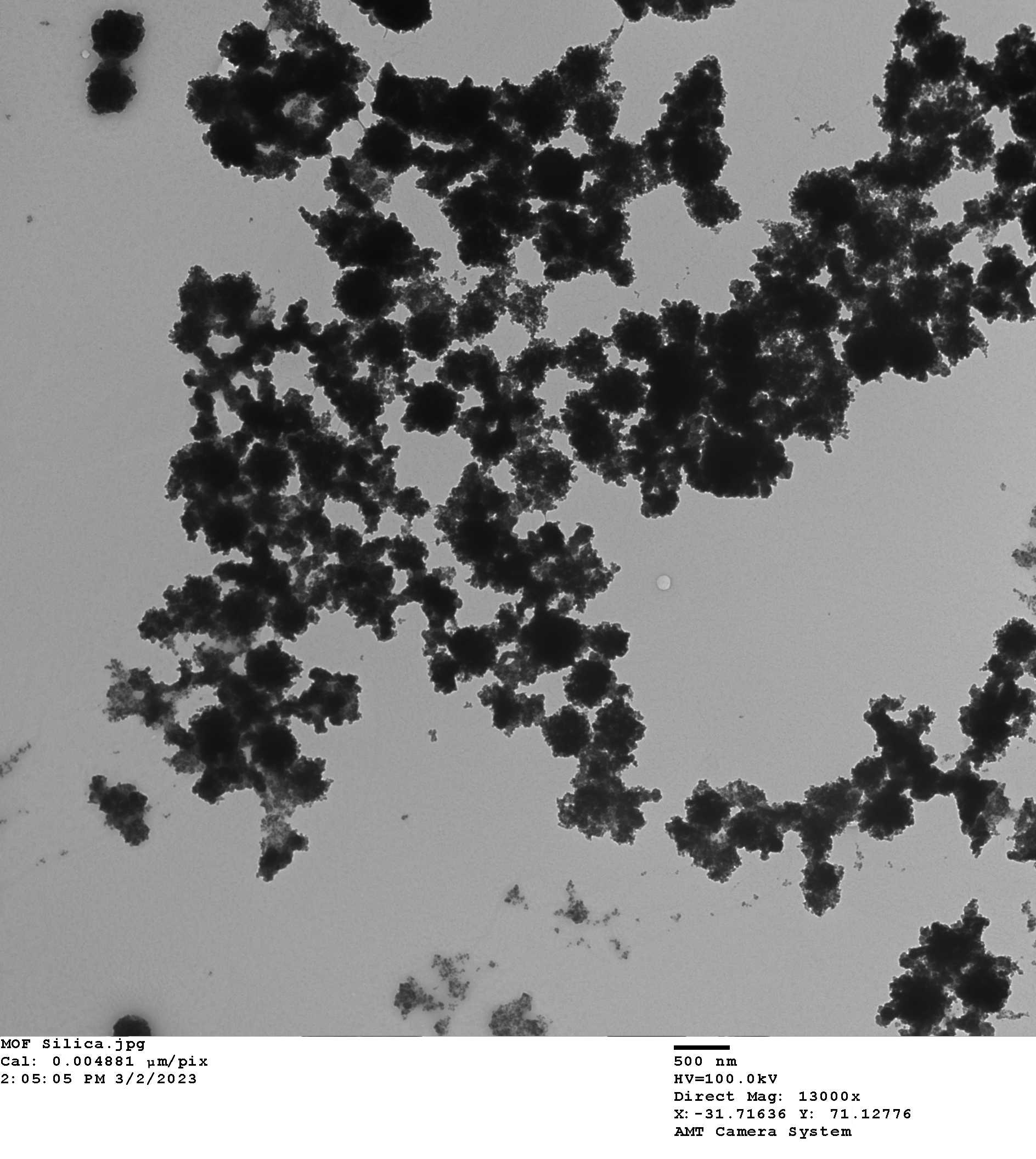Copper Metal Organic Framework (MOF) Nanoparticles
A new development leading to stable 400nm Copper MOF nanoparticles
Introducing Copper MOF nanoparticles - the ultimate solution for drug delivery in your research! With their exceptional performance in pH and thermal delivery, these Copper Metal Organic Framework Nanoparticles promise outstanding results in both in vitro and in vivo studies. Loaded with cutting-edge cancer therapy chemistries, they are a must-have for every scientist looking to take their research to new heights. Contact us now to learn more about this game-changing product!
This product comes dry ready for resuspension in saline or PBS. This product is capped in our long circulation polymer and loaded with the cancer therapy chemistry of your choice.
All About Copper MOF Nanoparticles
| Part # | Cage Diameter (nm) | Wt. (mg) | NPS/ml | Molarity (pM) | Moles | Drug Loading (mg) |
| D67-400 | 400 | 1 | 2.59E+08 | 4.30E-01 | 4.32E-16 | 0.1 |
Composition
These copper metal organic frameworks are shipped dry with no measurable residual reactants.
Custom Formulation
Customer can specify the drug type for loading and request a quote.
Quantity
This product is available in 1mg weights standard. For orders larger than 1mg, or for orders amounting over 10mg per annum, please contact sales for quantity pricing.
Delivery
Standard sizes are in stock. Special order sizes are shipped in two weeks or less. All domestic shipments are sent Fed Ex Standard Overnight delivery, international Fed Ex Priority 2 day. Saturday shipping available for extra charge.
Functionalization
This product comes with our proprietary long circulating time polymer capped. .
Shelf Life/Storage Temperature
This product is guaranteed for three months and should be stored at 4 °C after resuspendsion. The product must be used within 3-5 days after resuspension. Care must be taken to only use sterile glassware when working with this product.
Toxicity
No toxicity measurements have been taken. This product has been sterilized and is biological free.
Sterilization
This product is sterilized.
Certifications
Every order comes with a Certification of Analysis that includes the following information. We use calibration traceable:
UV-VIS (Agilent 8453) for extinction and concentration measurements
NIR (Cary 500) for NIR extinction and concentration measurements
DLS (Malvern Nano ZS) for zeta potential measurement
ICP-MS (Varian 820-MS) for gold mass measurements
TEM (Phillips CM-100 100KV) for sizing
"We were previously making our own gold nanoparticles using the commonly used technique of citrate reduction of Au(III). The colloids generated are broadly polydisperse, and we were concerned that our application of these particles in immuno-gold labeling of cells for optical coherence microscopy (OCM) would be utilizing only the large diameter tail of the distribution. We purchased the sampler package of NanoPartz gold spheres (30 nm, 50 nm, 70 nm, 90 nm) and examined each size carefully with dynamic light scattering, OCM, and spectrophotometry. Our measurements indicated diameters a couple nanometers larger than specifications (a result of measurements on the fully hydrated state?), and remarkable monodispersity - within specs. It is clear to us now that our early immuno-gold results were dominated by the largest diameter spheres of our early colloids. We are delighted by the NanoPartz monodisperse preparations and recommend them strongly!"
Dr. Richard C. Haskell
Professor of Physics & Director of Physics Clinic
Physics Department
Harvey Mudd College
"The scientists at Nanopartz have developed a line of colloidal gold nanorods with extremely high monodispersity in size, shape, and mass. The surfactant layer is highly stable and readily displaced for biofunctionalization. In every test, in vitro and in vivo, these materials have exceeded our expectations."
Geoffrey A. von Maltzahn
NSF and Whitaker Graduate Fellow
Harvard-MIT Division of Health Sciences and Technology
Laboratory for Multiscale Regenerative Technologies

